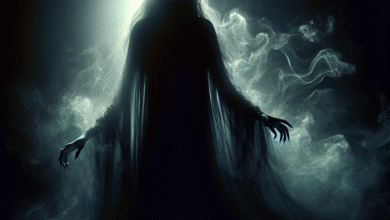The Predator: A Glorious Hunter from Beyond
In the dim light of early evening, when shadows lengthen and the air thickens with anticipation, a whisper runs through the dense jungles and murky forests of our planet. Beneath the surface of our modern world lies a supernatural entity—a hunter so relentless and cunning that it transcends the barriers of mere physicality. They call it the Predator.
Origins and Cultural Background
The concept of the Predator—a near-mythical being characterized by its stealth, technological prowess, and relentless pursuit—has its roots steeped in an amalgamation of various cultural mythologies. From ancient warrior legends depicting supernatural hunters to modern folklore, this creature embodies the primal instincts of humanity: survival, competition, and fear of the unknown.
The original conception of the Predator comes from an alien species known as the Yautja, a race of skilled hunters who traverse the cosmos in search of the ultimate prey: those who pose a challenge to their lethal technique and advanced weaponry. These beings are often depicted as towering figures, cloaked in an organic exoskeleton that shimmers like the night sky under the right light, rendering them nearly invisible.
Despite their extraterrestrial origin, the notion of a relentless entity that stalks its victims is found in various cultures. The skinwalker of Navajo tradition, a shapeshifter that preys on human fears, and the Wendigo, an insatiable hunter of flesh, share eerie parallels with the well-documented traits of the Predator. It seems to resonate with something profoundly instinctual within us, a collective fear of being hunted, even amongst the brightest stars.
Sightings and Legends
While the Predator itself is fictional, numerous accounts of “alien sightings” may fuel the mythos surrounding it. Typically, these tales unfold in heavily wooded areas or remote wildernesses, where witness accounts describe glowing lights in the sky and muffled sounds of rustling leaves. The infamous Roswell incident, coupled with the ongoing narrative of UFO activity, has subtly woven these extraterrestrial shadows into the fabric of folklore.
In the context of the Predator, the legends often depict a creature of immense strength, cloaked in shadows, symbolizing nature’s ferocity—both awe-inspiring and terrifying. While hard evidence remains elusive, cryptid enthusiasts speculate that the multitude of sightings is merely humanity grappling with the fear of the unknown. Who knows what skitters in the dark, camouflaged and silent?
Cinematic Appearances and Evolution in Pop Culture
The Predator solidified its cultural footmark in the annals of horror and science fiction with the breakout 1987 film “Predator,” directed by John McTiernan and starring Arnold Schwarzenegger. With its iconic blend of action, horror, and sci-fi, the film introduced audiences to a merciless hunter that could stalk prey with near-telepathic precision. The haunting visage of the Predator, complete with its dreadlock-like appendages and steely mandibles, became an indelible symbol of terror.
Over the years, this formidable creature leapt from the screen into a plethora of books, comic series, and video games. Subsequent films like “Predator 2,” “Predators,” and the crossover series “Alien vs. Predator” further explored its mythos, delving into the complex culture and traditions of the Yautja. In these narratives, the Predator is not just a mindless killer but a being driven by honor, ritual, and a code that elevates hunting to a revered practice.
Video games, too, have embraced this complex entity. Titles such as “Predator: Hunting Grounds” allow players to embody the cybernetic hunter, navigating lush terrains and tactically tracking human foes, reinforcing the notion that the ultimate thrill is in the chase.
A Creepy Fun Fact: The Yautja Code
In the shadowy world of the Predator, an unsettling notion emerges: this hunter doesn’t decimate for mere sport or rage; it adheres to an ancient code of ethics. The Yautja are known for only hunting worthy competitors, often allowing their prey the chance to fight back. They seek a challenge, one that tests strength, cunning, and combat prowess. This code resonates deeply, suggesting that humanity may not be the only beings capable of moral complexity—even those that lurk in the darkness have their own rules.
Urban legends have even suggested that ghosts who roam wild in the night may fear the Predator far more than the living do, as these hunters embody a relentless, spirit-hunting entity rarely satisfied with mere engagement.
Conclusion
The Predator is a testament to our deepest fears and wildest imaginings—a complex figure that embodies primal instincts while pushing the boundaries of our understanding. It serves as a chilling reminder that somewhere in the shadows, what we know as reality merges with the unknown. As questions surrounding unexplained lighting phenomena and cryptic disappearances circulate, the eerie myth of the Predator lives on, ensuring that the line between mythology and reality forever remains blurred. Who knows what truly lurks in the dark corners of our forests, skies, or even perhaps our very nightmares? After all, to be hunted is to know true fear, and in this case, the prey is but a heartbeat away from becoming the next tale whispered around flickering campfires.





